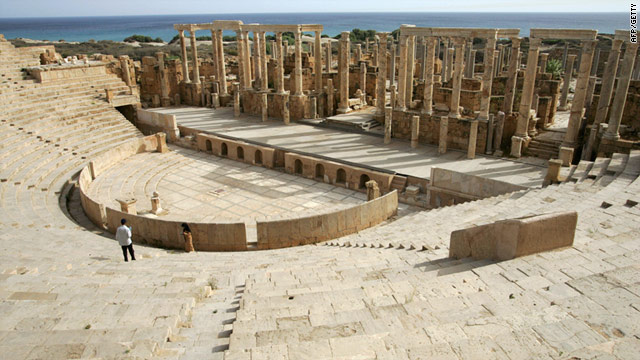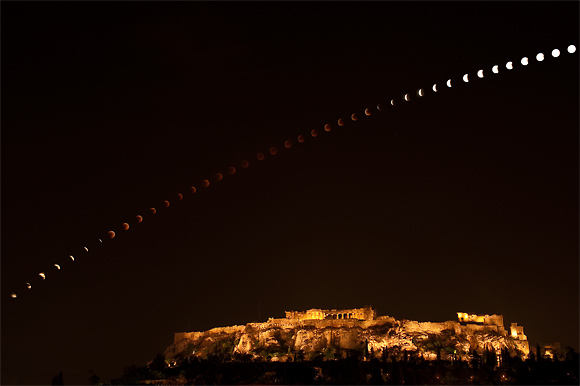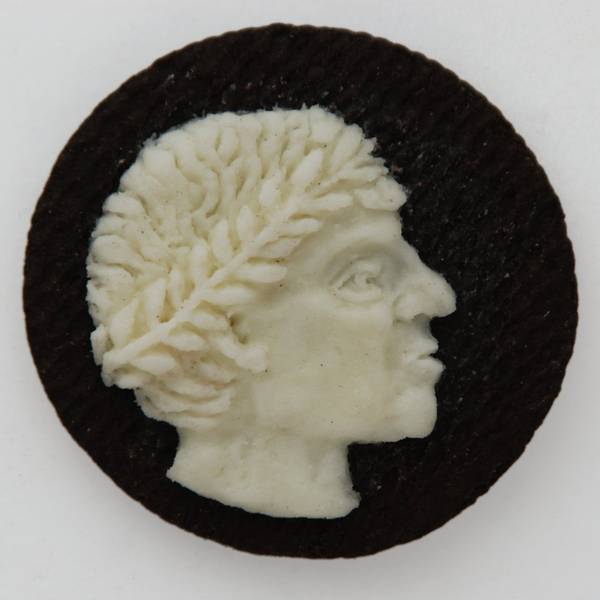
(CNN) -- NATO refused to say Tuesday whether or not it would bomb ancient Roman ruins in Libya if it knew Moammar Gadhafi was hiding military equipment there.
"We will strike military vehicles, military forces, military equipment or military infrastructure that threaten Libyan civilians as necessary," a NATO official in Naples told CNN, declining to give his name in discussing internal NATO deliberations.
But he said the alliance could not verify rebel claims that Libya's leader may be hiding rocket launchers at the UNESCO World Heritage site of Leptis Magna, a Roman city between the capital Tripoli and rebel-held Misrata.
Wing Commander Mike Bracken, a spokesman for NATO's Libya mission, later said it "would be a concern for us that Gadhafi and pro-Gadhafi forces would choose to contravene international law in hiding themselves in such a location."
And, he said, "If we were to take on any targets we would consider all risks."
But he underlined that NATO could not confirm suggestions that weapons might be placed at the heritage site.
The Bracken briefing came a day after a top British military officer admitted that the bombing campaign was straining British resources.
"If we do it for longer than six months, then we have to reprioritize our forces," Admiral Mark Stanhope said Monday.
"That does not mean we won't be doing it," he added.
NATO recently extended its mission -- officially to protect civilians in Libya from Gadhafi's efforts to crush an uprising that has left rebels in control of parts of the country -- for another 90 days, into September.
British Minister of Defence Liam Fox said Tuesday the Libya mission showed "how capable we are" and emphasized that the United Kingdom has the fourth largest military budget in the world.
Concerns over British capabilities came as Germany's foreign minister visited the de facto rebel capital of Benghazi and rebels reported progress against government forces in western mountain cities.
Guido Westerwelle said Germany formally recognized the rebel Transitional National Council as the representative of the Libyan people, putting Berlin in line with the United States, France, Italy and a handful of other countries.
As Germany recognized the rebel leadership, U.S. Secretary of State Hillary Clinton urged countries in Africa on Monday to kick out diplomats representing Gadhafi's government.
Also Monday, after a siege of nearly two months, rebels have freed the city of Al-Rayyana, northeast of Zintan, said rebel fighter Talha Al-Jiwali. Nine rebels were killed, and 35 were wounded, he said.
Al-Jiwali said forces entering Al-Rayyana found that more than 20 residents had been killed, a number of the women had been raped, and the town's electricity and water had been cut.
In nearby Zawiet al-Baqool, just east of Zintan, 500 to 600 government forces retained control, but the fighting was ongoing, he said.
Al-Jiwali added that nearly 100 members of Gadhafi's forces were killed in the two cities and that rebels confiscated their vehicles and arms.
Clinton pressed for diplomatic support for the rebels at a meeting of the African Union in Addis Ababa, Ethiopia.
She urged countries to "suspend the operations of Gadhafi's embassies in your countries," expel pro-Gadhafi diplomats and "increase contact and support" with the Transitional National Council, which represents the main opposition to Gadhafi's rule.
"Your words and actions could make the difference in bringing the situation finally to a close and allowing the people of Libya, on an inclusive basis, in a unified Libya, to get to work writing a constitution and rebuilding their country," she said.
The United States views the council "as the legitimate interlocutor for the Libyan people during this interim period," Clinton said last week in the United Arab Emirates.
On Monday, the United Arab Emirates notified Gadhafi's ambassador in that country that his diplomatic status there will expire in 72 hours, a diplomatic source in the country said. The UAE has recognized the Transitional National Council as the legitimate Libyan government.
World powers beefed up financial and moral support for the Libyan opposition last week at an international coalition meeting aimed at charting the course of a post-Gadhafi Libya.
At that meeting, in the UAE, Clinton announced an additional $26 million in U.S. aid for the victims of Libya's ongoing war. She also said time will be on the international coalition's side so long as Gadhafi faces sustained pressure.
Italy pledged up to $580 million to the Transitional National Council, which is facing a budget shortfall, to cover its expenses, but not weapons, Foreign Ministry spokesman Maurizio Massari said.
Kuwait will donate the $180 million it promised in April for humanitarian needs, said Sheikh Mohammed Sabah al Salman al Sabah, the Gulf nation's deputy prime minister and minister of foreign affairs.
CNN's Damien Ward, Laura Perez Maestro, Salma Abdelaziz, Frederik Pleitgen and Kareem Khadder contributed to this story.







